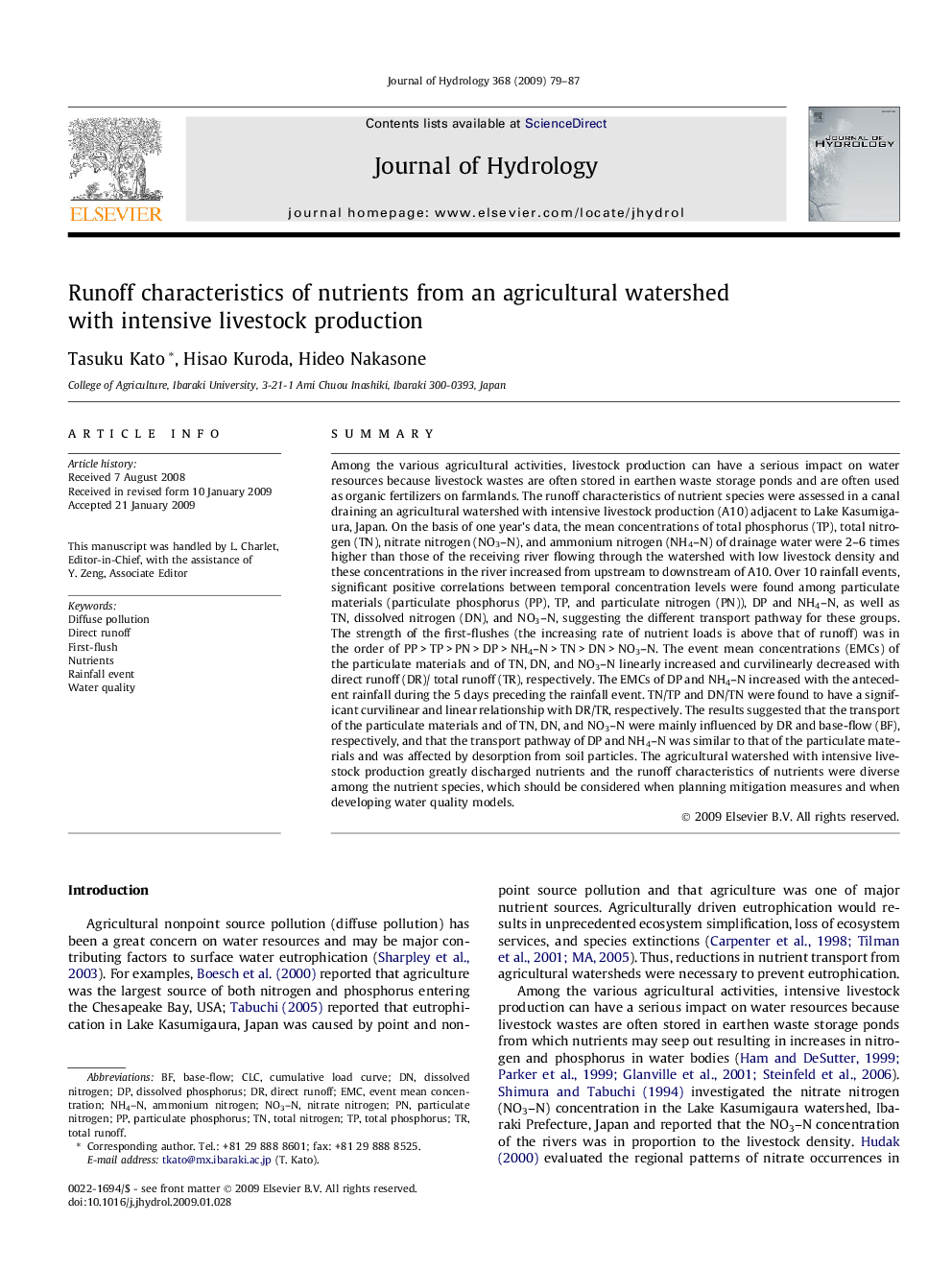| Article ID | Journal | Published Year | Pages | File Type |
|---|---|---|---|---|
| 4579028 | Journal of Hydrology | 2009 | 9 Pages |
SummaryAmong the various agricultural activities, livestock production can have a serious impact on water resources because livestock wastes are often stored in earthen waste storage ponds and are often used as organic fertilizers on farmlands. The runoff characteristics of nutrient species were assessed in a canal draining an agricultural watershed with intensive livestock production (A10) adjacent to Lake Kasumigaura, Japan. On the basis of one year’s data, the mean concentrations of total phosphorus (TP), total nitrogen (TN), nitrate nitrogen (NO3–N), and ammonium nitrogen (NH4–N) of drainage water were 2–6 times higher than those of the receiving river flowing through the watershed with low livestock density and these concentrations in the river increased from upstream to downstream of A10. Over 10 rainfall events, significant positive correlations between temporal concentration levels were found among particulate materials (particulate phosphorus (PP), TP, and particulate nitrogen (PN)), DP and NH4–N, as well as TN, dissolved nitrogen (DN), and NO3–N, suggesting the different transport pathway for these groups. The strength of the first-flushes (the increasing rate of nutrient loads is above that of runoff) was in the order of PP > TP > PN > DP > NH4–N > TN > DN > NO3–N. The event mean concentrations (EMCs) of the particulate materials and of TN, DN, and NO3–N linearly increased and curvilinearly decreased with direct runoff (DR)/ total runoff (TR), respectively. The EMCs of DP and NH4–N increased with the antecedent rainfall during the 5 days preceding the rainfall event. TN/TP and DN/TN were found to have a significant curvilinear and linear relationship with DR/TR, respectively. The results suggested that the transport of the particulate materials and of TN, DN, and NO3–N were mainly influenced by DR and base-flow (BF), respectively, and that the transport pathway of DP and NH4–N was similar to that of the particulate materials and was affected by desorption from soil particles. The agricultural watershed with intensive livestock production greatly discharged nutrients and the runoff characteristics of nutrients were diverse among the nutrient species, which should be considered when planning mitigation measures and when developing water quality models.
